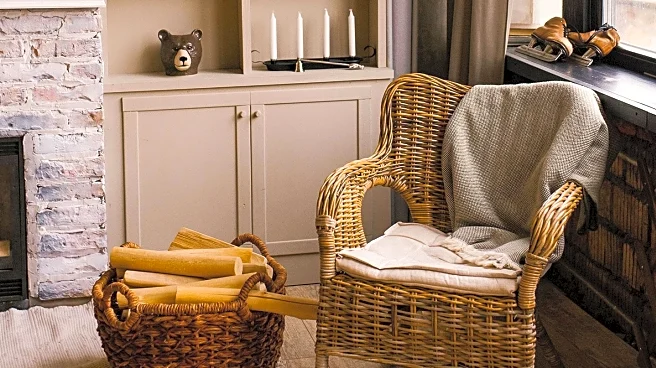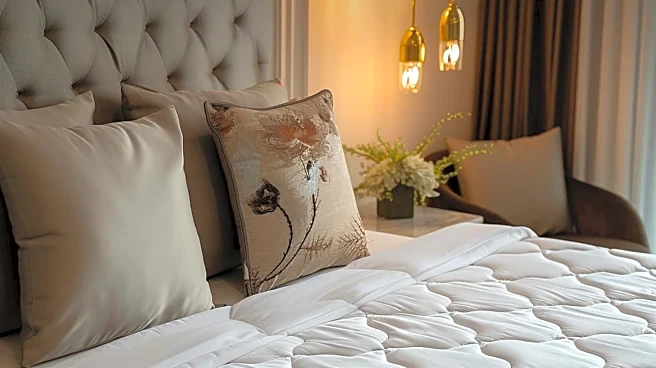What's Happening?
Aaron Preyer, a recent graduate from Eindhoven, has introduced an innovative furniture collection called Blooming Furniture. This collection features transformative objects that respond to touch and interaction,
utilizing an internal mechanism sensitive to pressure and weight changes. The furniture pieces, such as a chair that transforms from an upholstered table or ottoman into a comfortable armchair, are crafted with an aluminum base and customizable upholstery. The design celebrates the mechanics of transformation, drawing inspiration from the natural growth and evolution of plants. Preyer's work aims to integrate movement and functionality into furniture design, with current models including coffee tables, wall shelves, and more.
Why It's Important?
Preyer's Blooming Project represents a significant advancement in furniture design, emphasizing the integration of movement and functionality. This approach could influence the future of interior design, offering consumers versatile and adaptable furniture solutions. The project highlights a growing trend towards customizable and interactive home furnishings, which could appeal to a market seeking innovative and space-efficient designs. By showcasing the mechanics as part of the aesthetic, Preyer's work challenges traditional furniture design norms and could inspire further exploration in kinetic and transformative design.
What's Next?
Preyer plans to expand the Blooming Furniture collection beyond individual pieces to create a complete, recognizable series. This expansion could include further experimentation with different materials and mechanisms, potentially leading to new applications in both residential and commercial spaces. As the collection grows, it may attract interest from furniture manufacturers and designers looking to incorporate similar transformative elements into their products.
Beyond the Headlines
The Blooming Project also raises questions about the future of sustainable design. By creating multifunctional furniture, Preyer's work could contribute to reducing the need for multiple pieces, thus minimizing material use and waste. Additionally, the emphasis on customization allows for longer-lasting products that can adapt to changing consumer needs, aligning with broader sustainability goals in the design industry.











